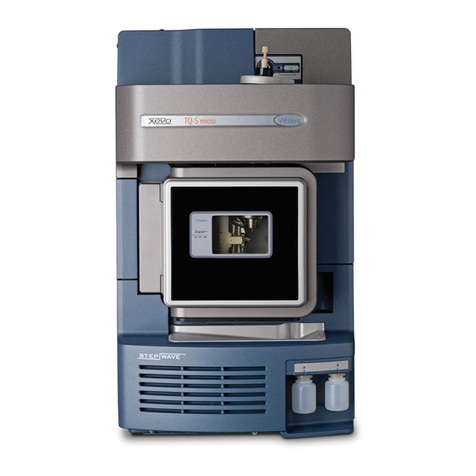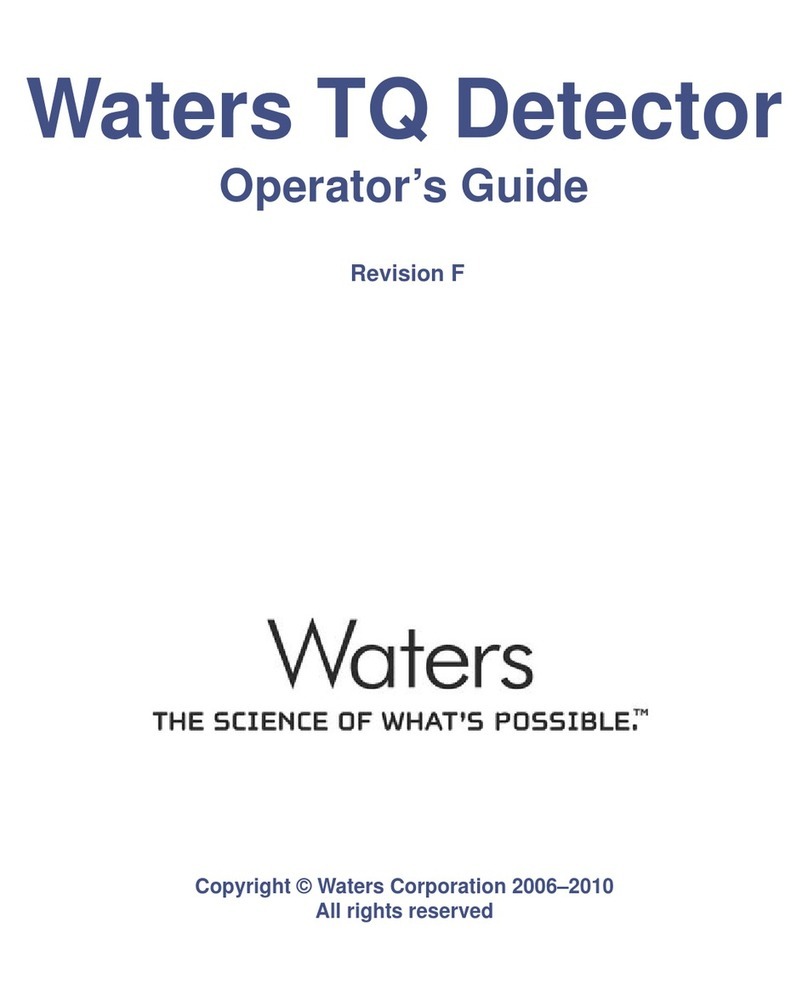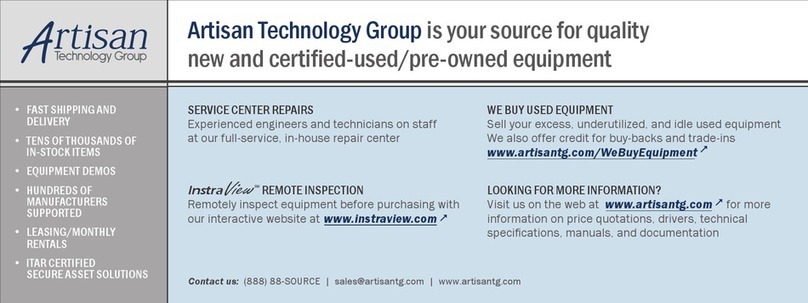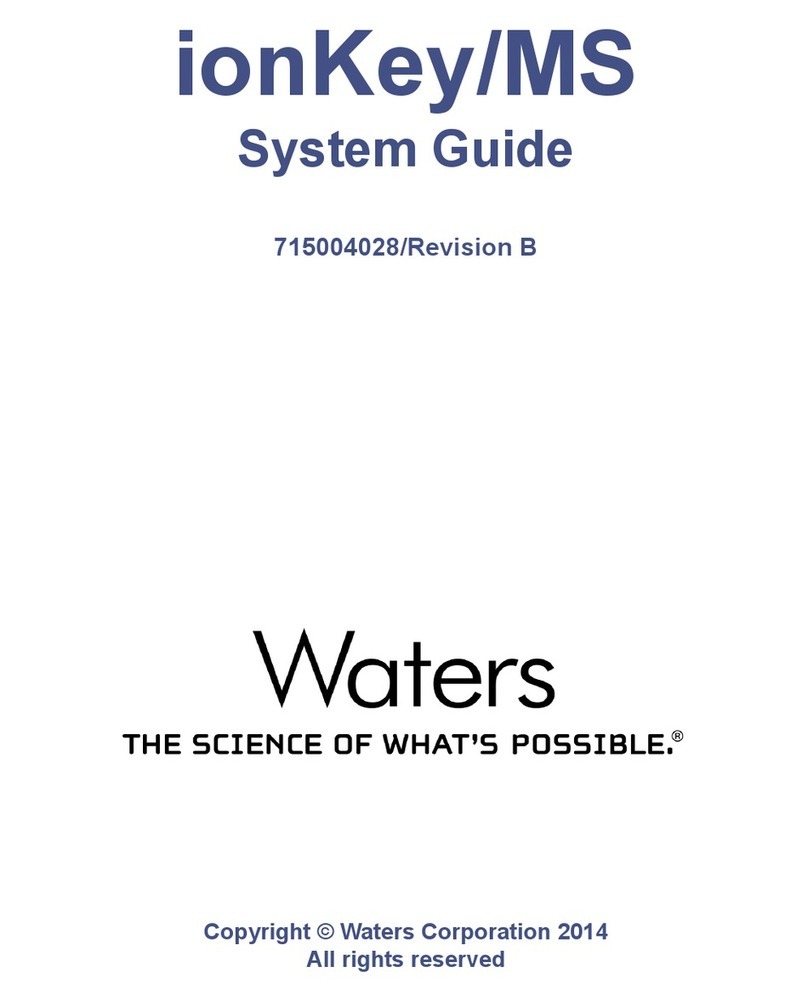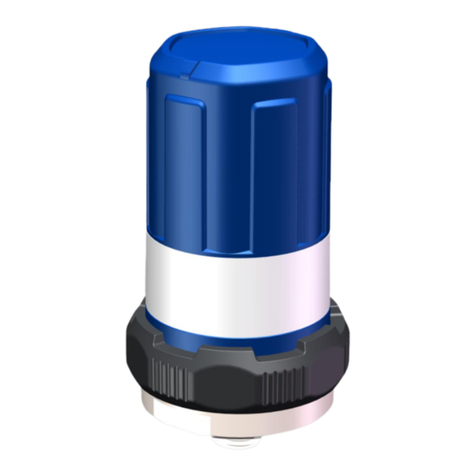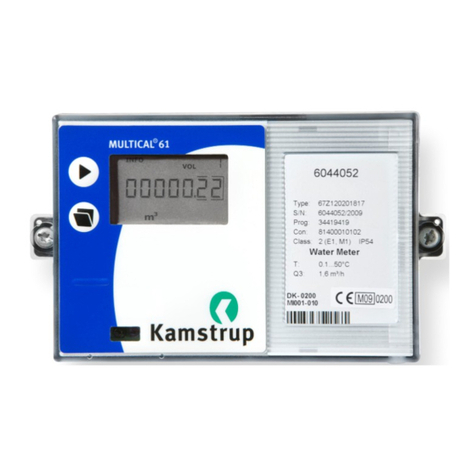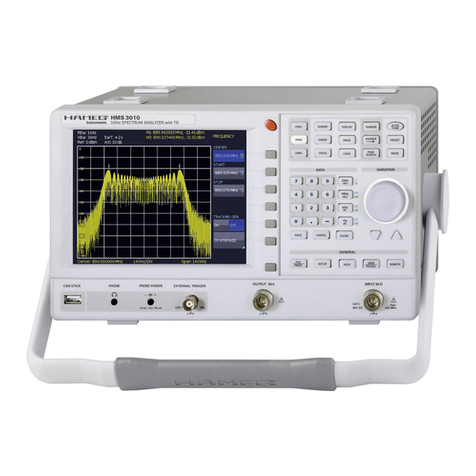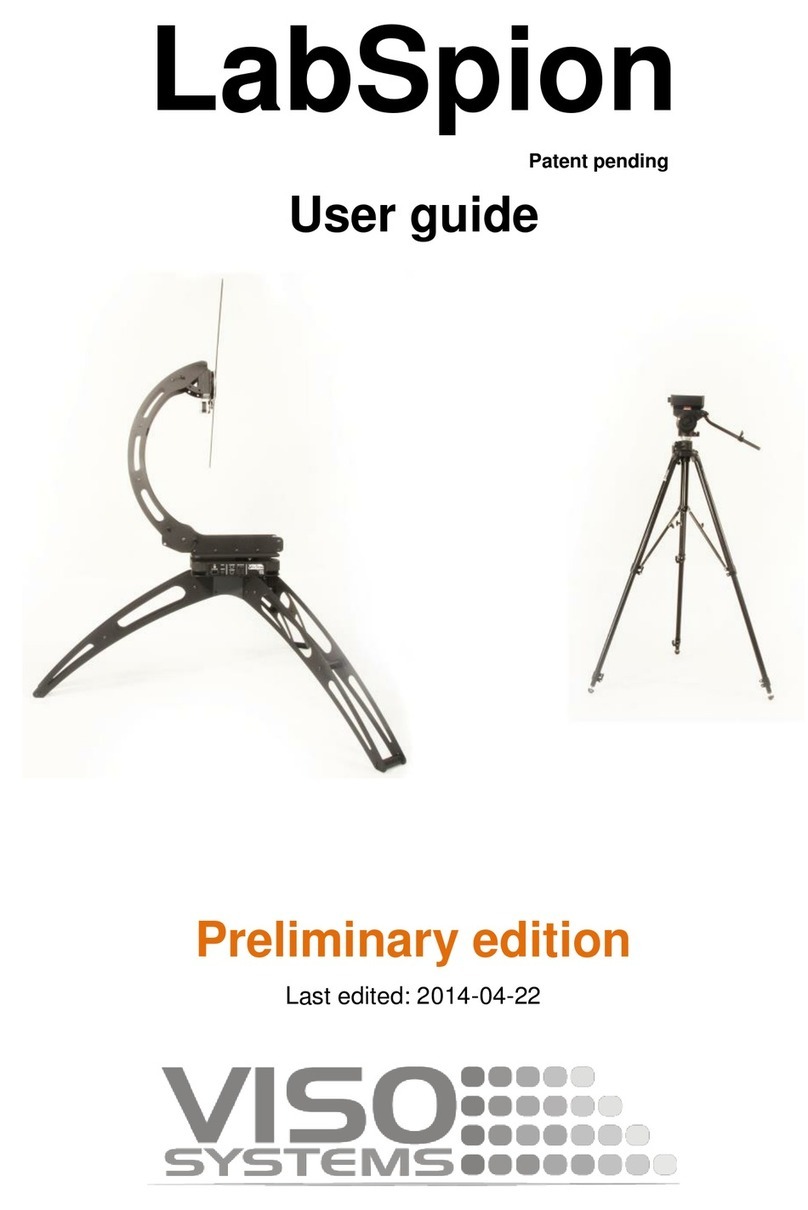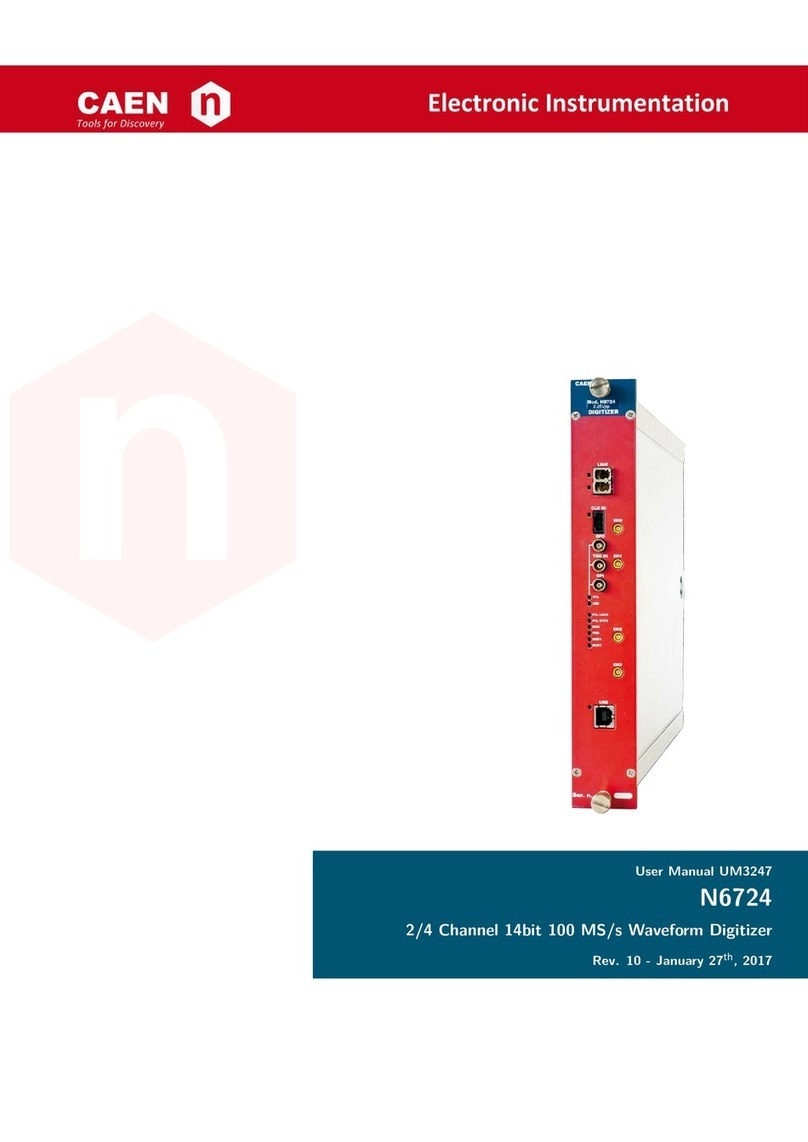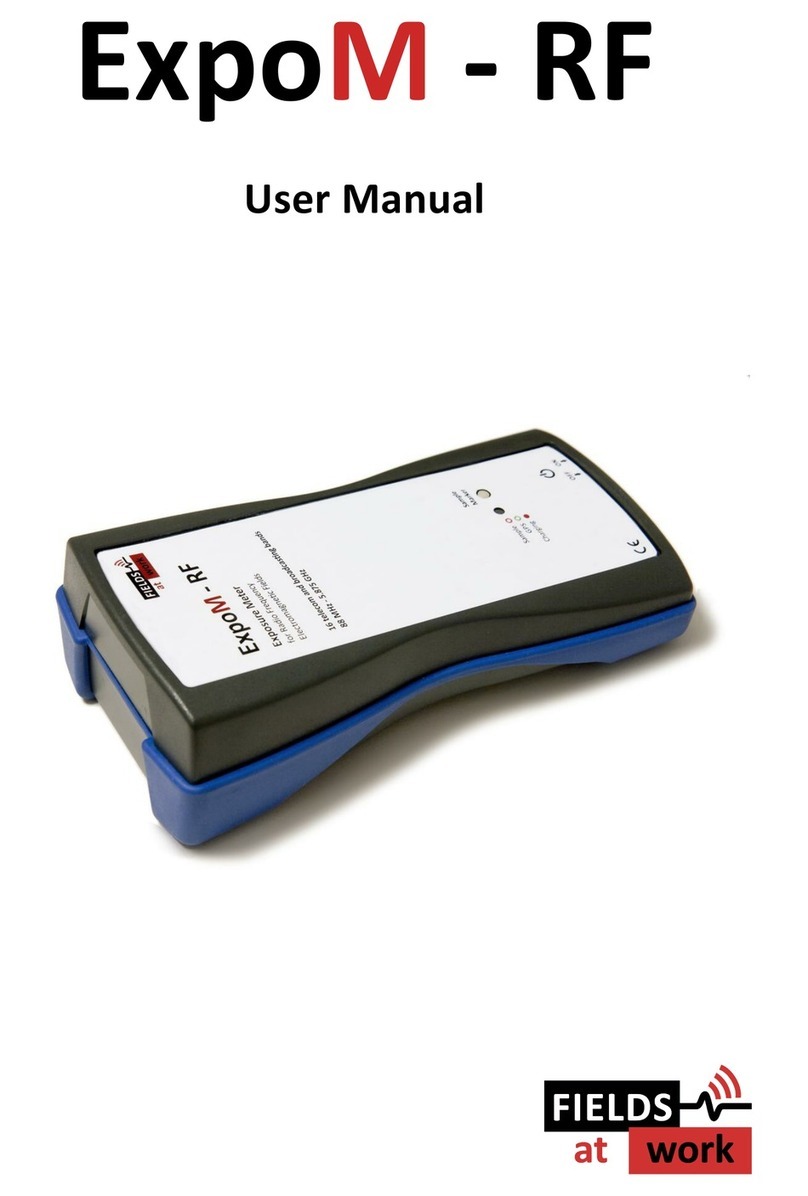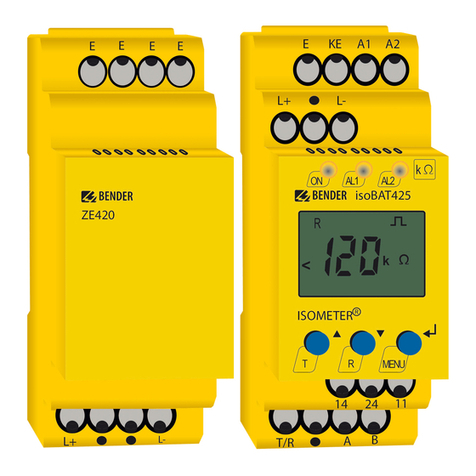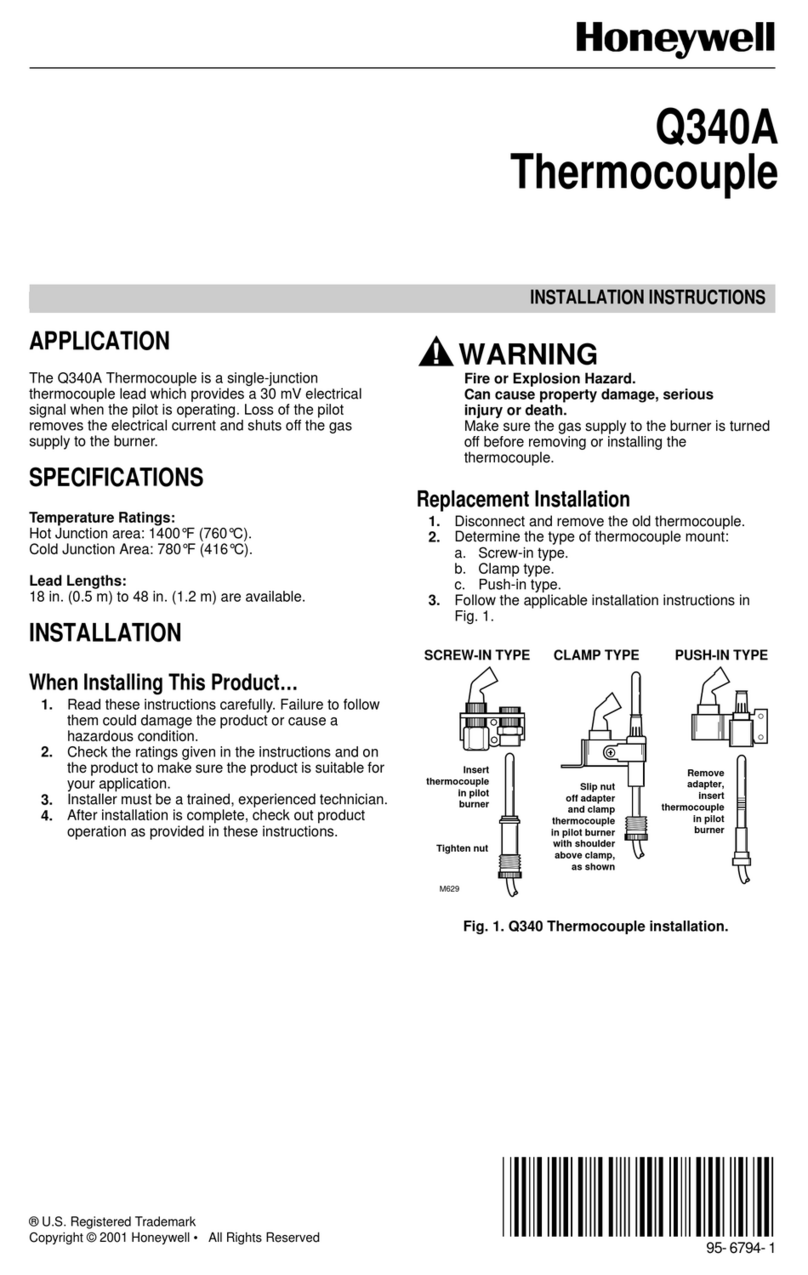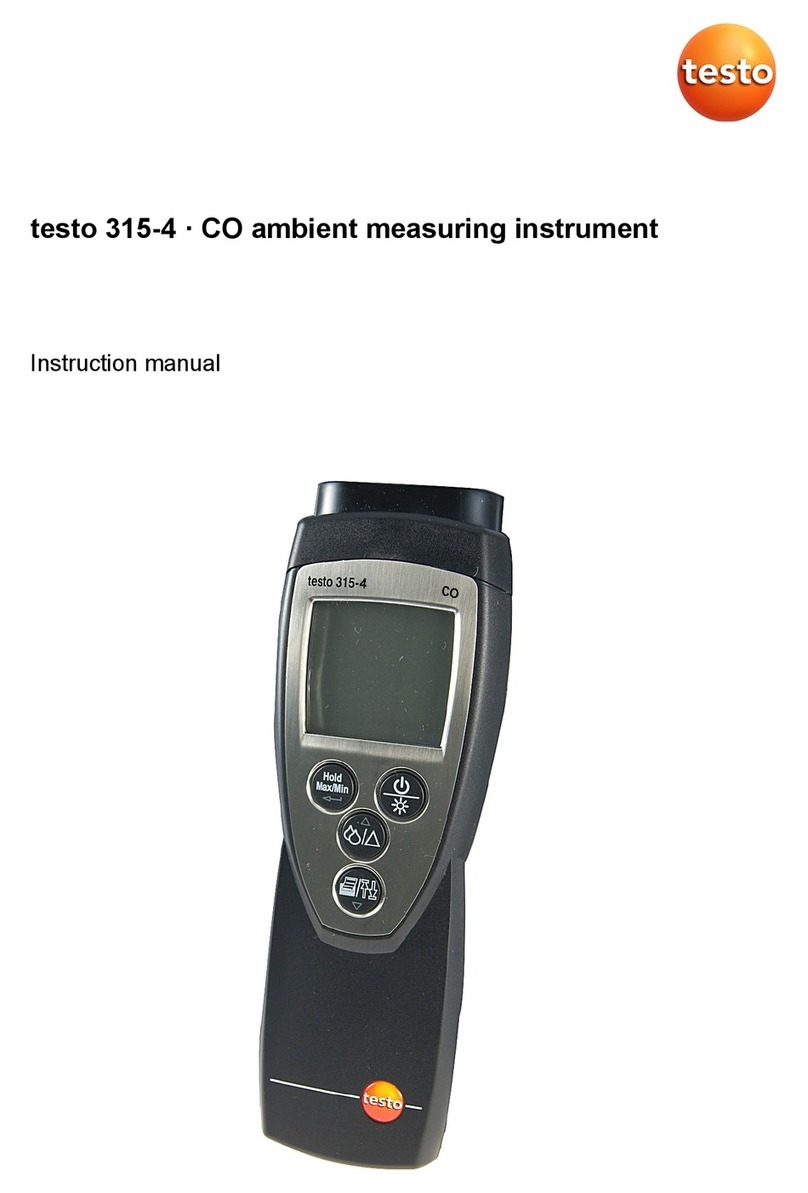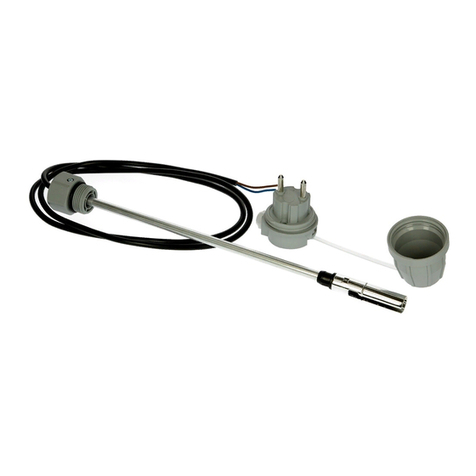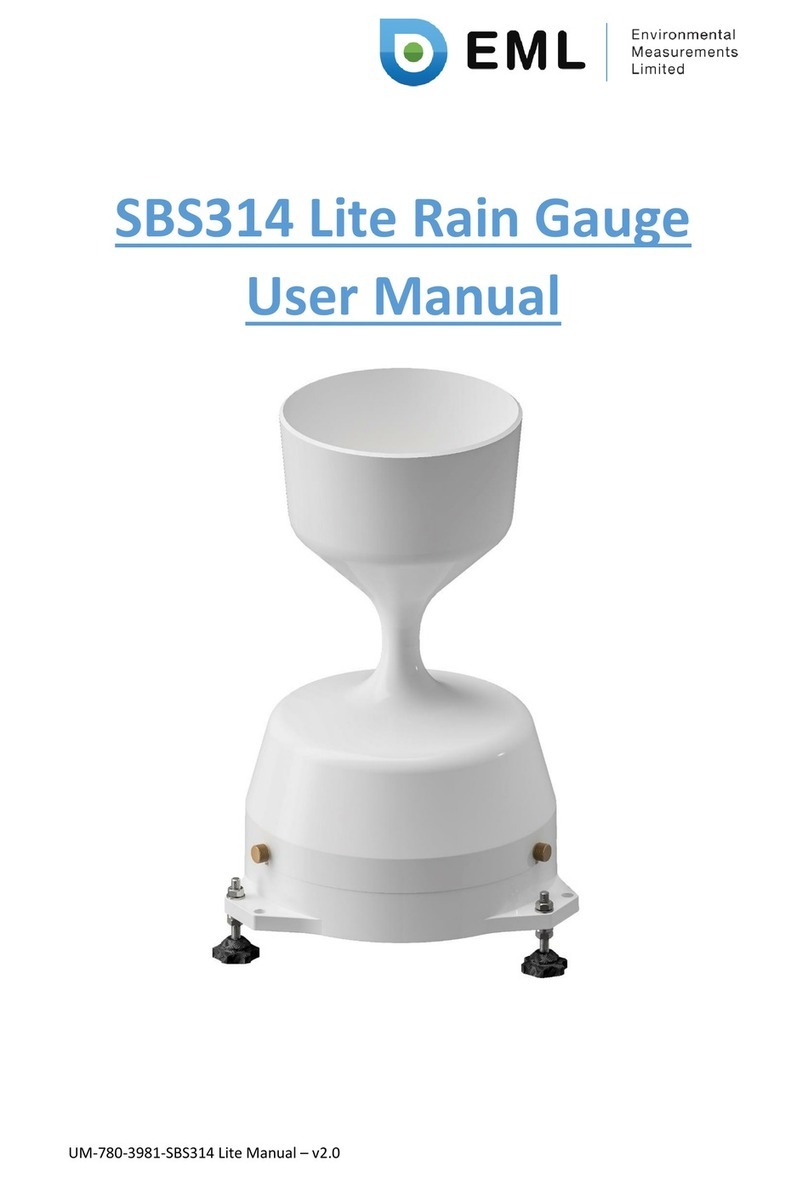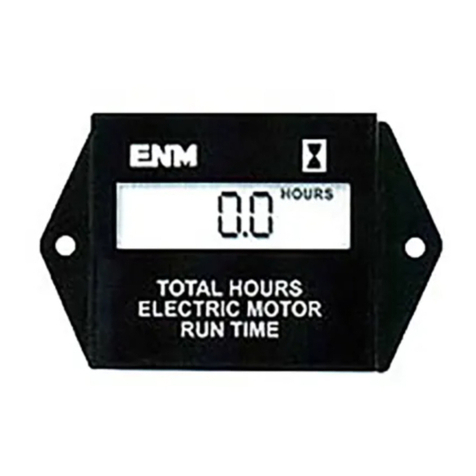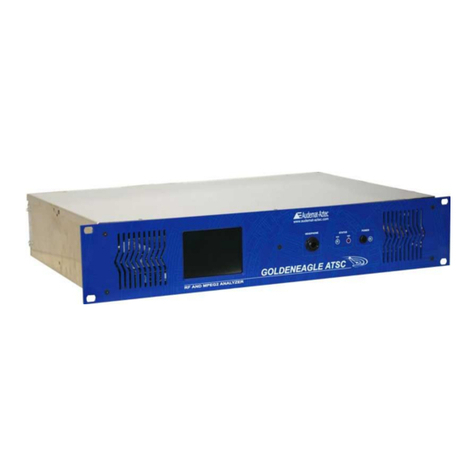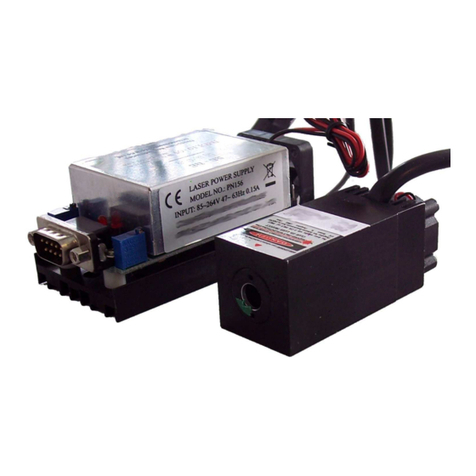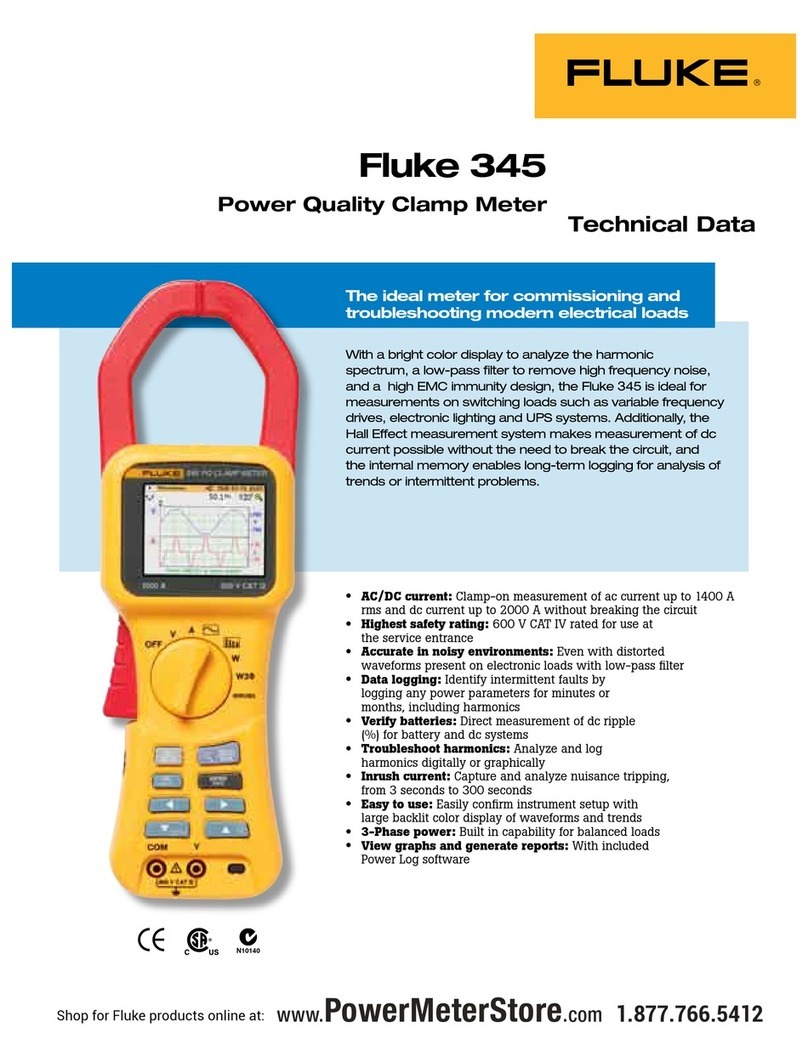Waters Xevo TQ-S cronos Operating manual

Waters Xevo TQ-S cronos
Overview and Maintenance Guide
715006200
Version 01 (previously released as Rev. A)
Copyright © Waters Corporation 2022
All rights reserved

General information
Audience and purpose
This guide is for operators of varying levels of experience. It gives an overview of the device and
explains how to prepare it for operation, change its modes of operation, and maintain it.
Copyright notice
© 2019 – 2022 WATERS CORPORATION. PRINTED IN THE UNITED STATES OF AMERICA
AND IN IRELAND. ALL RIGHTS RESERVED. THIS DOCUMENT OR PARTS THEREOF MAY
NOT BE REPRODUCED IN ANY FORM WITHOUT THE WRITTEN PERMISSION OF THE
PUBLISHER.
The information in this document is subject to change without notice and should not be construed
as a commitment by Waters Corporation. Waters Corporation assumes no responsibility for any
errors that may appear in this document. This document is believed to be complete and accurate
at the time of publication. In no event shall Waters Corporation be liable for incidental or
consequential damages in connection with, or arising from, its use. For the most recent revision
of this document, consult the Waters website (www.waters.com).
Trademarks
ACQUITY™ is a trademark of Waters Corporation.
ACQUITY Arc™ is a trademark of Waters Corporation.
APGC™ is a trademark of Waters Corporation.
Arc™ is a trademark of Waters Corporation.
ASAP™ is a trademark of Waters Corporation.
ESCi™ is a trademark of Waters Corporation.
IntelliStart™ is a trademark of Waters Corporation.
MassLynx™ is a trademark of Waters Corporation.
Snoop® is a registered trademark of Swagelok Company.
Swagelok® is a registered trademark of Swagelok Company.
TargetLynx™ is a trademark of Waters Corporation.
THE SCIENCE OF WHAT'S POSSIBLE™ is a trademark of Waters Corporation.
January 10, 2022, 715006200 Ver. 01 (previously released as Rev. A)
Page ii

Tygon® is a registered trademark of Saint-Gobain Performance Plastics Corporation.
UNIFI™ is a trademark of Waters Corporation.
UniSpray™ is a trademark of Waters Corporation.
UPLC™ is a trademark of Waters Corporation.
UltraPerformance LC™ is a trademark of Waters Corporation.
UPC²™ is a trademark of Waters Corporation.
Viton® is a registered trademark of DuPont Performance Elastomers LLC.
Waters™ is a trademark of Waters Corporation.
Waters Quality Parts™ is a trademark of Waters Corporation.
waters_connect™ is a trademark of Waters Corporation.
Xevo™ is a trademark of Waters Corporation.
ZSpray™ is a trademark of Waters Corporation.
All other trademarks are property of their respective owners.
Customer comments
Waters’ Customer Experience and Knowledge Management organization invites you to report
any errors that you encounter in this document or to suggest ideas for otherwise improving it.
Help us better understand what you expect from our documentation so that we can continuously
improve its accuracy and usability.
We seriously consider every customer comment we receive. You can reach us at
Contacting Waters
Contact Waters with enhancement requests or technical questions regarding the use,
transportation, removal, or disposal of any Waters product. You can reach us through the
Internet, telephone, fax, or conventional mail.
Contact method Information
www.waters.com The Waters website includes contact
information for Waters locations worldwide.
iRequest Request technical support for your Waters
instruments and software. iRequest is a free
and secure Web service that allows you to
request support and service for Waters
January 10, 2022, 715006200 Ver. 01 (previously released as Rev. A)
Page iii

Contact method Information
instruments and software, or schedule a
planned service activity.
Note: In areas managed by authorized
distributors, iRequest may not be available.
Contact your local distributor for more
information.
Telephone and fax From the USA or Canada, phone
800-252-4752 or fax 508-872-1990.
For other locations worldwide, phone and fax
numbers appear in the Waters Local Offices
information.
Conventional mail Waters Corporation
Global Support Services
34 Maple Street
Milford, MA 01757
USA
Additional resources
Waters provides the following additional resources to ensure your continued success with our
products.
Knowledge base: Obtain quick answers to your troubleshooting questions. Access support
articles on Waters instrumentation, Informatics, and chemistry.
eLearning courses: Learn anytime, anywhere, and at your own pace with self-paced eLearning
courses.
Customer education: Waters Educational services team is the leading training organization
empowering scientists to maximize their skills in UPLC, HPLC, LC-MS, and data management.
January 10, 2022, 715006200 Ver. 01 (previously released as Rev. A)
Page iv

Application notes: View our online digital library of Application notes for advanced analytical
technologies including chromatography, mass spectrometry, columns and sample preparation,
and data management software, demonstrating impactful scientific and operational benefits.
How-to video library: View/download the latest product how-to videos.
Graphical parts locator: Identify and order parts using an interactive graphical navigator. Access
maintenance procedures and reference documents.
Waters online toolbox: A collection of wizards that help you pick the correct chemistry
consumables to meet your separation requirements, including vials, plates, filters, column
selectivity charts, and more
Intended use of the Xevo TQ-S cronos
Waters designed the Xevo TQ-S cronos for use as a research tool to accurately, reproducibly,
and robustly quantify target compounds present at the lowest possible levels in highly complex
sample matrices. The Xevo TQ-S cronos is not intended for use in diagnostic applications.
Calibrating
To calibrate LC systems, adopt acceptable calibration methods using at least five standards to
generate a standard curve. The concentration range for standards must include the entire range
of QC samples, typical specimens, and atypical specimens.
When calibrating mass spectrometers, consult the instrument’s online Help system for calibration
instructions.
January 10, 2022, 715006200 Ver. 01 (previously released as Rev. A)
Page v

Quality control
Routinely run three QC samples that represent subnormal, normal, and above-normal levels of a
compound. If sample trays are the same or very similar, vary the location of the QC samples in
the trays. Ensure that QC sample results fall within an acceptable range, and evaluate precision
from day to day and run to run. Data collected when QC samples are out of range might not be
valid. Do not report these data until you are certain that the instrument performs satisfactorily.
EMC considerations
FCC radiation emissions notice
Changes or modifications not expressly approved by the party responsible for compliance could
void the user's authority to operate the equipment. This device complies with Part 15 of the FCC
Rules. Operation is subject to the following two conditions: (1) this device may not cause harmful
interference, and (2) this device must accept any interference received, including interference
that may cause undesired operation.
Canada spectrum management emissions notice
This class A digital product apparatus complies with Canadian ICES-001.
Cet appareil numérique de la classe A est conforme à la norme NMB-001.
ISM classification: ISM group 1 class A
This classification was assigned in accordance with CISPR 11 Industrial Scientific and Medical
(ISM) instruments requirements.
Group 1 products apply to intentionally generated and/or used conductively coupled radio-
frequency energy that is necessary for the internal functioning of the equipment.
Class A products are suitable for use in all establishments other than residential locations and
those directly connected to a low-voltage power supply network supplying a building for domestic
purposes.
There may be potential difficulties in ensuring electromagnetic compatibility in other environments
due to conducted and radiated disturbances.
This equipment complies with the emission and immunity requirements described in the relevant
parts of IEC/EN 61326: Electrical equipment for measurement, control, and laboratory use —
EMC requirements.
January 10, 2022, 715006200 Ver. 01 (previously released as Rev. A)
Page vi

EMC emissions
Do not use the equipment in close proximity to sources of strong electromagnetic radiation (for
example, unshielded intentional RF sources). The radiation can interfere with the equipment’s
proper operation.
EMC grounding requirements
Notice: To avoid difficulties in ensuring electromagnetic compatibility, if the
instrument's pump control cable is attached to the vacuum hose, ensure that the cable
is grounded to the mass spectrometer.
Legal manufacturer
Legal manufacturer:
Waters Corporation
34 Maple Street
Milford, MA 01757
USA
Safety considerations
Some reagents and samples used with Waters instruments and devices can pose chemical,
biological, or radiological hazards (or any combination thereof). You must know the potentially
hazardous effects of all substances you work with. Always follow Good Laboratory Practice
(GLP), and consult your organization’s standard operating procedures as well as your local
requirements for safety.
Applicable symbols
The following symbols can be present on the device, system, or packaging.
Symbol Definition
Manufacturer
Date of manufacture
January 10, 2022, 715006200 Ver. 01 (previously released as Rev. A)
Page vii

Symbol Definition
Confirms that a manufactured product complies
with all applicable European Community
directives
UK Conformity Assessed marking confirms that
a manufactured product is in conformity with
the applicable requirements for products sold
within Great Britain
Australia EMC compliant
Confirms that a manufactured product complies
with all applicable United States and Canadian
safety requirements
Confirms that a manufactured product complies
with all applicable United States and Canadian
safety requirements
Environmentally friendly use period (China
RoHS): indicates the number of years from the
date of manufacture until the product, or
components within the product, are likely to be
discarded or degrade into the environment
Consult instructions for use
Alternating current
Electrical and electronic equipment with this
symbol may contain hazardous substances and
should not be disposed of as general waste
For compliance with the Waste Electrical and
Electronic Equipment Directive (WEEE)
2012/19/EU, contact Waters Corporation for the
correct disposal and recycling instructions
For indoor use only
No pushing
January 10, 2022, 715006200 Ver. 01 (previously released as Rev. A)
Page viii

Symbol Definition
LC
Do not connect to an LC system
10kg
max
Indicates the maximum load you can place on
that item (for example, 10kg)
Serial number
REF
Part number, catalog number
Safety hazard symbol notice
The symbol indicates a potential hazard. Consult the documentation for important
information about the hazard and the appropriate measures to prevent and control the hazard.
Electrical power safety notice
Do not position the device so that it is difficult to disconnect the power cord.
Equipment misuse notice
If equipment is used in a manner not specified by its manufacturer, the protection provided by the
equipment may be impaired.
January 10, 2022, 715006200 Ver. 01 (previously released as Rev. A)
Page ix

Considerations specific to the device
Power cord replacement hazard
Warning: To avoid electric shock, observe these precautions:
• The power cord functions as the safety disconnect device. Position the equipment
so that you can reach the power cord easily.
• Use SVT-type power cords in the United States and HAR-type power cords, or
better, in Europe. For requirements elsewhere, contact your local Waters distributor.
• Do not replace power cords with inadequately rated power cords.
• Inspect the power cords for damage and replace them if necessary.
• Power-off and unplug a system module or stand-alone device before performing
any maintenance operation on it.
Solvent leakage hazard
The source exhaust system is designed to be robust and leak-tight. Waters recommends that you
perform a hazard analysis, assuming a maximum leak into the laboratory atmosphere of 10% LC
eluate.
Warning: To avoid exposure to toxic substances and biohazards from O-ring leaks in the source
exhaust system, observe these precautions:
• Replace the source O-rings at intervals not exceeding one year.
• Prevent chemical degradation of the source O-rings, which can withstand exposure only to
certain solvents, by determining whether any solvents you use are chemically compatible with
the composition of the O-rings.
Bottle placement prohibition
Warning: To avoid injury from electrical shock or fire, and damage to the equipment, follow
these guidelines:
• Do not expose the workstation or ancillary equipment to dripping or splashing liquids.
• Do not place objects filled with liquid, such as solvent bottles, on top of the workstation or
ancillary equipment.
January 10, 2022, 715006200 Ver. 01 (previously released as Rev. A)
Page x

Spilled solvents hazard
Prohibited: To avoid equipment damage caused by spilled solvent, do not place
reservoir bottles directly atop an instrument or device or on its front ledge. Instead,
place the bottles in the bottle tray, which serves as secondary containment in the event
of spills.
Flammable solvents hazard
Warning: To prevent the ignition of flammable solvent vapors in the enclosed space of
a mass spectrometer’s ion source, ensure that these conditions are met:
• Nitrogen flows continuously through the source.
• A gas-fail device is installed to interrupt the flow of LC solvent should the nitrogen
supply fail.
• The nitrogen supply pressure does not fall below 400 kPa (4 bar, 58 psi) during an
analysis requiring the use of flammable solvents.
Glass breakage hazard
Warning: To avoid injuries from broken glass, falling objects, or exposure to biologically
hazardous, toxic, or corrosive substances, never place containers on top of the instrument or on
its front covers.
High-temperature hazard
Warning: To avoid burn injuries, avoid touching the listed components when operating
or maintaining the instrument.
January 10, 2022, 715006200 Ver. 01 (previously released as Rev. A)
Page xi

Mass spectrometer high-temperature hazard
Source ion block assembly
Desolvation heater
Hazards associated with removing an instrument from service
Warning: To avoid personal contamination with biologically hazardous, toxic, and corrosive
materials, wear chemical-resistant, powder-free gloves when performing this procedure.
Warning: To avoid puncture injuries, handle sample needles, syringes, fused silica
lines, and borosilicate tips with extreme care.
January 10, 2022, 715006200 Ver. 01 (previously released as Rev. A)
Page xii

Warning: To avoid eye injury from broken fused silica lines, use eye protection when
performing this procedure.
When you remove the instrument from use to repair or dispose of it, you must decontaminate all
of its vacuum areas. These are the areas in which you can expect to encounter the highest levels
of contamination:
• Source interior
• Waste tubing
• Exhaust system
• Rotary pump oil (where applicable)
The need to decontaminate other vacuum areas of the instrument depends on the kinds of
samples the instrument analyzed and their levels of concentration. Do not dispose of the
instrument or return it to Waters for repair until the authority responsible for approving its removal
from the premises specifies the extent of decontamination required and the level of residual
contamination permissible. That authority must also prescribe the method of decontamination to
be used and the appropriate protection for personnel undertaking the decontamination process.
You must handle items such as syringes, fused silica lines, and borosilicate tips used to carry
sample into the source area in accordance with laboratory procedures for contaminated vessels
and sharps. To avoid contamination by carcinogens, toxic substances, or biohazards, you must
wear chemical-resistant gloves when handling or disposing of used oil.
Safe disposal
Contact [email protected] with any questions or concerns regarding the proper handling or
disposal.
Dispose of Waters instrumentation products in accordance with applicable requirements and best
practices as described below.
• Follow appropriate procedures for flushing the instrument’s fluid paths of any hazardous
samples or solvents.
• Waters instruments are subject to European Union’s Waste Electrical and Electronic
Equipment (WEEE) and Restriction of Hazardous Substances (RoHS) Directives. According
to these directives, do not dispose of instruments in the general waste stream. Similar “e-
waste” laws also apply in other jurisdictions. In all cases, ensure that a certified electronics
recycler processes end-of-life instruments.
• Some Waters instruments use batteries, mercury-containing lamps, or other replaceable
components during the life span of the instrument. Handle such materials in accordance with
local laws governing their processing and safe disposal.
January 10, 2022, 715006200 Ver. 01 (previously released as Rev. A)
Page xiii

Safety advisories
Consult the "Safety advisories" appendix in this publication for a comprehensive list of warning
advisories and notices.
January 10, 2022, 715006200 Ver. 01 (previously released as Rev. A)
Page xiv

Table of contents
General information........................................................................................................ii
Audience and purpose............................................................................................................................ii
Copyright notice......................................................................................................................................ii
Trademarks.............................................................................................................................................ii
Customer comments..............................................................................................................................iii
Contacting Waters..................................................................................................................................iii
Additional resources........................................................................................................................iv
Intended use of the Xevo TQ-S cronos.................................................................................................. v
Calibrating.............................................................................................................................................. v
Quality control........................................................................................................................................vi
EMC considerations...............................................................................................................................vi
FCC radiation emissions notice.......................................................................................................vi
Canada spectrum management emissions notice.......................................................................... vi
ISM classification: ISM group 1 class A.......................................................................................... vi
EMC emissions...............................................................................................................................vii
EMC grounding requirements.........................................................................................................vii
Legal manufacturer............................................................................................................................... vii
Safety considerations............................................................................................................................vii
Applicable symbols.........................................................................................................................vii
Safety hazard symbol notice........................................................................................................... ix
Electrical power safety notice..........................................................................................................ix
Equipment misuse notice................................................................................................................ ix
Considerations specific to the device...............................................................................................x
Safe disposal........................................................................................................................................xiii
Safety advisories..................................................................................................................................xiv
1 Waters Xevo TQ-S cronos overview........................................................................ 21
1.1 Automation and fluidics.................................................................................................................. 22
1.2 ACQUITY UPLC-MS Xevo TQ-S cronos systems......................................................................... 23
1.2.1 Compatible systems - Xevo TQ-S cronos.............................................................................23
January 10, 2022, 715006200 Ver. 01 (previously released as Rev. A)
Page xv

1.2.2 ACQUITY system core components.....................................................................................23
1.2.3 Waters ACQUITY Xevo TQ-S cronos UPLC-MS system......................................................26
1.2.4 Software and data system.................................................................................................... 26
1.3 Ionization techniques and source probes.......................................................................................27
1.3.1 Electrospray ionization .........................................................................................................27
1.3.2 ESCi......................................................................................................................................28
1.3.3 APCI......................................................................................................................................28
1.3.4 UniSpray source................................................................................................................... 28
1.3.5 Atmospheric solids analysis probe (ASAP)...........................................................................28
1.4 Fluidics System.............................................................................................................................. 29
1.4.1 Overview...............................................................................................................................29
1.4.2 System components............................................................................................................. 30
1.4.3 System operation..................................................................................................................30
1.5 Ion optics........................................................................................................................................30
1.6 MS operating modes...................................................................................................................... 31
1.7 MS/MS operating modes................................................................................................................32
1.7.1 Product (daughter) ion spectrum.......................................................................................... 33
1.7.2 Precursor (parent) ion spectrum........................................................................................... 33
1.7.3 MRM mode........................................................................................................................... 34
1.7.4 PICS mode............................................................................................................................34
1.7.5 RADAR mode....................................................................................................................... 34
1.7.6 Constant neutral loss mode.................................................................................................. 35
1.8 Sample inlet....................................................................................................................................36
1.9 Leak sensors..................................................................................................................................36
1.10 Vacuum system............................................................................................................................ 36
1.11 Rear panel....................................................................................................................................36
2 Preparing the mass spectrometer for operation.................................................... 38
2.1 Preparing to start the mass spectrometer...................................................................................... 38
2.2 Starting the mass spectrometer using MassLynx software............................................................ 39
2.3 Starting the mass spectrometer using waters_connect software................................................... 40
2.4 Verifying the instrument’s state of readiness..................................................................................42
2.5 Monitoring the mass spectrometer LEDs....................................................................................... 42
2.5.1 Power LED............................................................................................................................42
January 10, 2022, 715006200 Ver. 01 (previously released as Rev. A)
Page xvi

2.5.2 Operate LED.........................................................................................................................42
2.6 Tuning and calibration information................................................................................................. 42
2.7 Running the mass spectrometer at higher flow rates..................................................................... 42
2.8 Preparing the fluidics system......................................................................................................... 43
2.8.1 Installing the reservoir bottles............................................................................................... 43
2.8.2 Installing the low-volume vials.............................................................................................. 44
2.8.3 Purging the fluidics................................................................................................................44
2.9 Rebooting the mass spectrometer................................................................................................. 45
2.10 Leaving the mass spectrometer ready for operation.................................................................... 45
2.11 Emergency shutdown of the mass spectrometer..........................................................................46
3 Changing the mode of operation............................................................................. 47
3.1 ESI, ESCi, and APCI modes.......................................................................................................... 47
3.1.1 ESI mode.............................................................................................................................. 47
3.1.2 ESCi mode............................................................................................................................47
3.1.3 APCI mode............................................................................................................................48
3.1.4 Configuring for ESI/ESCi/APCI modes................................................................................. 48
3.1.5 Installing the probe adapter.................................................................................................. 51
3.1.6 Installing the probe assembly............................................................................................... 54
3.1.7 Removing and refitting the probe inlet fitting.........................................................................60
3.1.8 Connecting the probe assembly to a UPC² system.............................................................. 62
3.1.9 Removing the probe adapter................................................................................................ 64
3.1.10 Installing and removing the corona pin............................................................................... 65
3.2 UniSpray standard source..............................................................................................................67
3.2.1 Installing the UniSpray source.............................................................................................. 69
3.2.2 Removing the UniSpray source ........................................................................................... 72
4 Maintenance procedures.......................................................................................... 74
4.1 Maintenance schedule for Xevo TQ-S cronos................................................................................74
4.2 Spare parts.....................................................................................................................................75
4.3 Safety and handling........................................................................................................................76
4.4 Preparing the instrument for working on the source.......................................................................76
4.4.1 Using MassLynx software to prepare the instrument for operations on or inside its
source......................................................................................................................................77
January 10, 2022, 715006200 Ver. 01 (previously released as Rev. A)
Page xvii

4.4.2 Using waters_connect software to prepare the instrument for operations on or inside its
source......................................................................................................................................77
4.5 Removing and refitting the source enclosure................................................................................. 78
4.5.1 Removing the source enclosure from the instrument........................................................... 78
4.5.2 Fitting the source enclosure to the instrument......................................................................79
4.6 Operating the source isolation valve.............................................................................................. 80
4.6.1 Closing the source isolation valve.........................................................................................80
4.6.2 Opening the source isolation valve.......................................................................................81
4.7 Removing O-rings and seals.......................................................................................................... 82
4.7.1 O-ring removal kit..................................................................................................................82
4.8 Cleaning the instrument case.........................................................................................................83
4.9 Emptying the nitrogen exhaust trap bottle......................................................................................83
4.10 Maintaining the rotary backing pump's oil.................................................................................... 85
4.11 Cleaning the source components................................................................................................. 88
4.12 Cleaning the sampling cone assembly.........................................................................................88
4.12.1 Removing the sampling cone assembly from the source................................................... 88
4.12.2 Disassembling the sampling cone assembly...................................................................... 90
4.12.3 Cleaning the sample cone and cone gas nozzle................................................................ 92
4.12.4 Assembling the sampling cone assembly...........................................................................94
4.12.5 Fitting the sampling cone assembly to the source..............................................................95
4.13 Cleaning the ion block assembly..................................................................................................96
4.13.1 Removing the ion block assembly from the source assembly............................................ 96
4.13.2 Disassembling the source ion block assembly................................................................... 98
4.13.3 Cleaning the ion block components..................................................................................103
4.13.4 Assembling the source ion block assembly...................................................................... 104
4.13.5 Fitting the ion block assembly to the source assembly.....................................................105
4.14 Cleaning the ion guide assembly............................................................................................... 106
4.14.1 Removing the pumping block assembly and ion guide assembly from the instrument.....106
4.14.2 Removing the ion guide assembly and differential aperture from the pumping block
assembly............................................................................................................................... 108
4.14.3 Removing the differential aperture support and the differential aperture from the ion
guide assembly..................................................................................................................... 109
4.14.4 Cleaning the differential aperture......................................................................................110
4.14.5 Cleaning the ion guide assembly...................................................................................... 111
4.14.6 Fitting the differential aperture and the differential aperture support onto the ion guide
assembly................................................................................................................................113
4.14.7 Fitting the ion guide assembly and differential aperture onto the pumping block
assembly................................................................................................................................114
January 10, 2022, 715006200 Ver. 01 (previously released as Rev. A)
Page xviii

4.14.8 Fitting the pumping block assembly and ion guide assembly onto the instrument........... 115
4.15 Replacing the ion block source heater........................................................................................116
4.16 Replacing the probe assembly................................................................................................... 120
4.16.1 Removing the probe assembly......................................................................................... 120
4.17 Replacing the ESI probe tip and gasket..................................................................................... 122
4.17.1 Removing the ESI probe tip and gasket........................................................................... 122
4.17.2 Fitting the ESI probe tip and gasket..................................................................................124
4.18 Cleaning the APCI probe tip.......................................................................................................125
4.19 Replacing the APCI probe heater...............................................................................................126
4.19.1 Removing the APCI probe heater.....................................................................................126
4.19.2 Fitting the new APCI probe heater....................................................................................127
4.20 Cleaning or replacing the corona pin..........................................................................................129
4.21 Replacing the source assembly seals........................................................................................ 130
4.21.1 Removing the probe adjuster assembly probe and source enclosure seals.....................130
4.21.2 Fitting the new source enclosure and probe adjuster assembly probe seals................... 132
4.22 Replacing the air filter.................................................................................................................133
4.23 Replacing the UniSpray probe assembly................................................................................... 135
4.23.1 Removing the UniSpray probe assembly..........................................................................135
4.23.2 Installing the UniSpray probe assembly............................................................................136
4.24 Maintaining the UniSpray impactor pin.......................................................................................138
4.24.1 Removing and installing the UniSpray impactor pin......................................................... 138
4.24.2 Cleaning or replacing the UniSpray impactor pin..............................................................139
4.25 Replacing the instrument’s fuses................................................................................................140
A Safety advisories.....................................................................................................141
A.1 Warning symbols..........................................................................................................................141
A.1.1 Specific warnings................................................................................................................142
A.2 Notices.........................................................................................................................................144
A.3 Bottles Prohibited symbol............................................................................................................ 144
A.4 Required protection......................................................................................................................144
A.5 Warnings that apply to all Waters instruments and devices.........................................................145
A.6 Warnings that address the replacement of fuses.........................................................................149
January 10, 2022, 715006200 Ver. 01 (previously released as Rev. A)
Page xix

A.7 Electrical symbols........................................................................................................................ 150
A.8 Handling symbols.........................................................................................................................151
B External Connections............................................................................................. 153
B.1 External wiring, vacuum, and gas connections............................................................................153
B.2 Connecting the Edwards oil-filled backing pump......................................................................... 155
B.2.1 Making the electrical connections to the rotary backing pump...........................................158
B.3 Connecting to the nitrogen gas supply.........................................................................................158
B.4 Connecting to the collision cell gas supply.................................................................................. 160
B.5 Connecting the nitrogen exhaust line...........................................................................................160
B.6 Connecting liquid waste lines.......................................................................................................163
B.7 Connecting to the workstation......................................................................................................164
B.7.1 Connecting the workstation to the power source................................................................165
B.8 Connecting Ethernet cables (systems with ACQUITY LC).......................................................... 165
B.9 I/O signal connectors................................................................................................................... 166
B.9.1 Making I/O signal connections............................................................................................167
B.10 Connecting to the power supply.................................................................................................170
C Materials of construction and compatible solvents............................................ 171
C.1 Preventing contamination............................................................................................................ 171
C.2 Items exposed to solvents........................................................................................................... 171
C.3 Solvents used to prepare mobile phases.....................................................................................172
D Plumbing the fluidics system................................................................................ 173
D.1 Preventing contamination............................................................................................................ 173
D.2 The selector valve........................................................................................................................173
D.3 Plumbing schematic.....................................................................................................................174
D.4 Tubing and connection specifications.......................................................................................... 174
January 10, 2022, 715006200 Ver. 01 (previously released as Rev. A)
Page xx
Table of contents
Other Waters Measuring Instrument manuals
